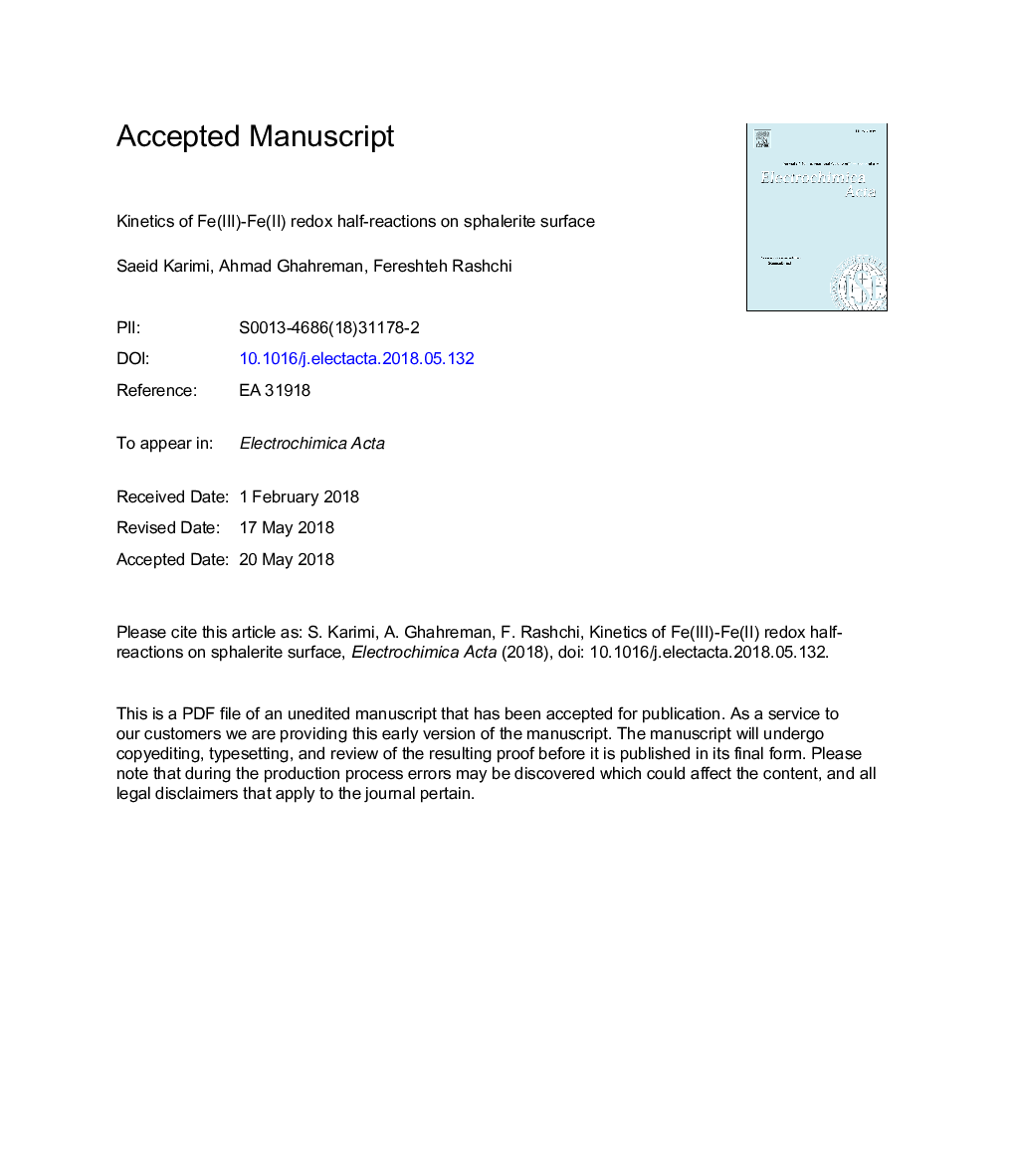| Article ID | Journal | Published Year | Pages | File Type |
|---|---|---|---|---|
| 6602434 | Electrochimica Acta | 2018 | 44 Pages |
Abstract
In this research, the kinetics of Fe(III)-Fe(II) redox half-reactions on the sphalerite surface has been investigated in 0.5â¯M sulfuric acid in the temperature range of 22-65â¯Â°C. Chronoamperometry and cyclic voltammetry (CV) methods have been used to collect the kinetics data for Fe(III)-Fe(II) redox half-reactions. In the Fe-containing solutions, the current density of Fe(III)-Fe(II) redox half-reactions is overlapped by sphalerite oxidation and other sulfides present in the working electrode (i.e. sphalerite concentrate). To overcome this problem, the mixed potential theory has been introduced by subtracting the current density of sphalerite oxidation in the Fe-free solution from that in the Fe-containing solution. In addition, electrochemical impedance spectroscopy (EIS) has been used to evaluate the effect of Fe(III)-Fe(II) redox half-reactions at the interface and surface processes of the sphalerite mineral. Results showed the exchange current density increased about 10 times with temperature in the range of 22-65â¯Â°C. In addition, the equilibrium potential of Fe(III)-Fe(II) couple gradually increases from 508â¯mV vs. Ag/AgCl at 22â¯Â°C to 582â¯mV vs. Ag/AgCl at 65â¯Â°C. Generally, all Nyquist impedance spectrums show two time constants with two faradaic processes. The Rct values in Fe-containing solution were about one-half of Rct values in Fe-free electrolyte. The rate controlling step for sphalerite dissolution in Fe-free acid solution was found to be the oxidation of sphalerite, while in Fe-containing solution, the sphalerite oxidative dissolution is controlled by diffusion of Fe(III) within the passive layer and charge transfer process at the interface between mineral electrode and electrolyte.
Keywords
Related Topics
Physical Sciences and Engineering
Chemical Engineering
Chemical Engineering (General)
Authors
Saeid Karimi, Ahmad Ghahreman, Fereshteh Rashchi,
